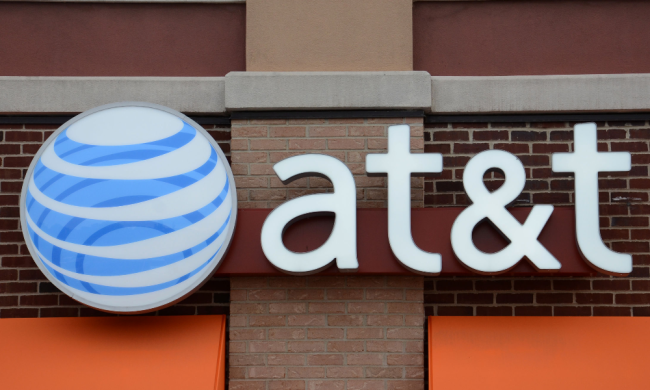Faster phones, easier access to on-demand video, simpler networking — on the surface, 5G sounds like a dream. So why is it more of a nightmare?
Hear me out.
5G: The promise of faster bandwidth
At least on paper, everything about 5G makes sense. The technology, short for fifth generation and the latest cellular technology you’ll need to know about, is a smart evolution from the current 4G LTE network you’re most likely using. Current 4G networks power the latest iPhone and Android smartphones, they’re increasingly baked into cars, and we use them for video downloads and to watch the Red Sox win the World Series on our mobiles. And some people worry that they’re running out of room.
5G promises much faster speeds: 1 gigabit per second downloads, compared with the national average of about 20 Mbps on today’s networks. Yeah, that’s just a promise, but it’s a good thing. It means you’ll be able to download that first episode of Game of Thrones in a few seconds, rather than a few minutes. Sure, 4G networks are faster than they were in 2016, but are they fast enough?

Beyond mere speed, 5G promises incredibly low latency, a measure of the time it takes data to travel from point A to point B and back again. With today’s 4G networks, it’s just 10 or 20 milliseconds – the blink of an eye or the pop of a camera flash, really. 5G may drop it to just a single millisecond, potentially 10× less latency. Why does that matter? If you’ve ever tried VR and noted that the scenery doesn’t move as fast as you do, or were irritated when the audio and video on a stream you’re watching are out of sync, you’ve experienced the pains of latency.
Networking companies believe the incredibly low latency of 5G paired with its fast speeds will enable all sorts of uses, from controlling manufacturing machines in real time, to facilitating car to car communication, to the dream of IoT, where everything talks to everything else at the speed of thought.
“Low-latency services and massive IoT scale will thrive … [meaning] more connected services and devices, and higher broadband capacity that can benefit our entire society,” says Nicki Palmer, chief network engineering officer and head of wireless networks for Verizon Wireless. Mo Katibeh, Chief Marketing Officer for AT&T Business, is equally ebullient, describing a recent experience gaming over 5G “…using mmWave spectrum and edge computing technology. The demo was a two-player hardware-intensive video game where the entire experience was being powered by 5G. No on-premise equipment—the game itself (for both players) was housed in the cloud. It was a truly remarkable experience.”
So yeah, that all sounds good. But hear me out.
The messy downside of 5G
To achieve all that low-latency goodness and deliver those delicious download speeds, network companies have been looking at millimeter-wave bandwidths, meaning high-frequency spectrums: 30 GHz to 300 GHz. Verizon uses 28 and 39GHz, for example. The challenge is, those waves don’t travel far at all. Remember when cordless phones went from 2.4GHz to 4.8GHz? You couldn’t walk in the next room and keep a call going. These frequencies present technical hurdles that researchers are still struggling with.
Remember when cordless phones went from 2.4GHz to 4.8GHz? You couldn’t walk in the next room and keep a call going.
Oh, and here’s a fun fact: Since every carrier is using different spectrum for their 5G experiments, you probably won’t be able to use a 5G phone on different networks. “It’s not because there isn’t a desire and we don’t want to have cross-compatibility,” said Gordon Mansfield, AT&T’s vice president of radio networks and device design, recently. ” It’s just that nobody has figured out how to cram the 28GHz 5G that Verizon and T-Mobile are using, and AT&T’s 39GHz 5G, into one box yet. And while T-Mobile and Verizon are using similar 28GHz bands, T-Mobile is also putting 5G on the 600MHz band, which Verizon is not.”
Oh, and here’s another fun fact: Did I mention that the signals are easy to block? Steven J. Vaughn Nicols put it well in Computerworld: “That stop sign in front of your car? Bleck! There went your signal.”
Sprint stands alone with a unique plan: run 5G on the same 2.5GHz spectrum it currently uses for 4G. Sure, that sounds smarter, but the company will still have to upgrade every cellular tower with new radios to support that plan.
Oh yeah, one more thing: In order to get 5G, you’ll need to upgrade. Your current phone can’t just be “turned on” to the new tech, nor can all of the IoT devices you currently own that networking companies want to interconnect with it. It may be simpler some day to use, but to capitalize you’ll have to replace everything. Every smart doorbell, every connected cooker, every thermostat. That’s not smart. That just sounds wasteful.
What about Gigabit LTE?
Then there’s the speed thing. That 1Gbps speed is theoretical, just something in the labs. It’ll take a while to hone 5G to make it that fast. Meanwhile, network operators have been doing exactly that with 4G. Remember the LTE part of 4G? That stands for Long Term Evolution, and in the long term, it keeps getting better. According to Fierce Wireless, upgrades to AT&T’s 4G network that will be in place by the end of the year should bring a 400 Mbps theoretical max speed.
“That stop sign in front of your car? Bleck! There goes your signal.”
Research and development are crucial to advancing our networks, and there’s reason to keep iterating around the ideas and concepts of 5G. Faster? Lower latency? Yes please! But for now, why not keep improving 4G, and ensure more widespread adoption of broadband technologies across the rural areas of our country? Because winter is coming – and my network damn well better be prepared for the download demands.


